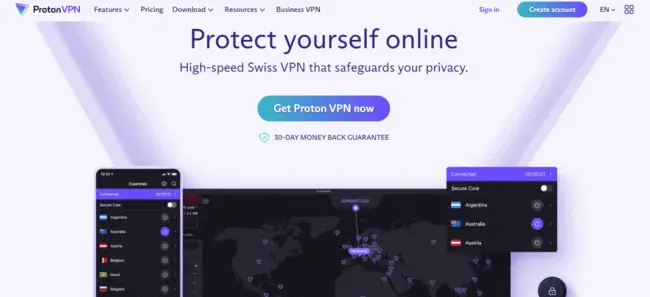It’s generally not too hard to connect at least to a basic open network on any public Wi-Fi, and even getting a VPN connected usually isn’t that difficult on most public Wi-Fi networks in most places where it’s set up for ease of use (bars, restaurants, stations, airports, hotels, etc).
But there can be something specifically about the configuration of public Wi-Fi networks in public libraries and universities especially (including university libraries, halls of residence etc), that makes them harder to connect a VPN on.
I’ve personally been fine getting any VPN to work on almost all public Wi-Fi networks, but I only ever run into problems at my current local public library Wi-Fi network. It’s easy to just connect to unsecured (which isn’t recommended), but actually getting a VPN to connect to really secure the connection, using my usual free versions, was very hard.
They just won’t connect to a VPN server when I try; even nearby servers are reduced to a “red bar” weak or zero connection, or they just can’t establish a connection when I click the button and I’m just sat there waiting with nothing happening. There’s something about the way this particular network is configured that is blocking or restricting the VPN usage, and I’ve seen the same things sometimes reported on university networks as well (like libraries, halls of residence etc).
In this guide, we’ll cover more specialized solutions specifically for getting a VPN to connect on university or pubic library Wi-Fi networks, since they can sometimes present unique difficulties not found on other public Wi-Fi networks.
The bottom line on this there’s usually a way around these problems even on the more difficult library/university networks, even if it means you need to use a more reputable, advanced VPN like ProtonVPN. But let’s cover this and all other troubleshooting steps you can try.
Quick Troubleshooting Tips For Getting a VPN To Work On Library/University Wi-Fi
Here’s a quick run-down of some more obvious and quick things you can try if you’re not able to get a VPN connected on a university/library Wi-Fi network:
Login to the public network first – Most public networks require you to go through a login page first before accessing the network. Make sure you’ve done this and can browse at least on the unprotected network first (just try accessing Bing or Google or some other site to make sure you’re at least connected to the main network, before trying the VPN).
Disconnect & Reconnect To Wi-Fi – Some public Wi-Fi networks can be a real pain to get initially connected to. You might have to keep disconnecting and re-connecting to the access point a few times from your Wi-Fi settings. Also keep trying to browse to generic sites like Bing/Google via your address bar first, to keep prompting the “network sign-in” page if it won’t come up, and try a few different browsers as well.
Try restarting devices – Sometimes just rebooting your devices and the VPN app can also refresh the connection and get you at least connected to the basic unprotected network, when it wouldn’t connect before, and then you can try the VPN again. Sometimes there’s just a lot of resetting/restarting/re-connecting messing about needed to finally get connected on a tricky library/university network.
Move around for better signal – The signal in a lot of libraries especially can be weak in some zones, especially the really large public libraries. Try finding where the extender nodes/pods are on each floor, and moving close to them for a better signal. Everyone at the library I’m at right now always complains that the Wi-Fi is a bit ropey even at the best of times. Sometimes you might have to move around a bit to find a decent spot.
Try different ports/protocols – For more advanced users, you can browse within your VPN app Settings and try and change the port away from 443 to something else, and the away from UDP protocol as well, which is sometimes blocked. Try also switching between the OpenVPN/WireGuard/IPsec/L2TP connection protocols, or whatever else is available, to see if this allows a connection.
Change DNS servers – Some public Wi-Fi networks will not even allow you to initially connect to their open network, if you’re using Custom DNS servers like Google DNS. You need to switch back to Automatic/default DNS servers from within your device’s network settings, to allow the initial connection, and then you can try using a VPN once connected.
See our full guide on getting a VPN to connect on public Wi-Fi, for more detail on each of these troubleshooting steps
Specialized Tip #1 – Try Using ProtonVPN
If all other steps fail, this is a nice little ninja tip that finally got me connected even on this tricky public library network – just use ProtonVPN’s free or premium version, which seems to work more often even on restricted or otherwise tricky public Wi-Fi networks.
On this particular library network, using the free versions of PrivadoVPN, AtlasVPN or ZoogVPN all failed, on both desktop and mobile. Perhaps these free VPNs are too basic, or not trusted by the network.
But ProtonVPN worked fine.

I don’t know whether it’s the protocols, the way the app is coded, or whatever, but this VPN always connected right away, even on a library network where other VPN’s failed.
So download and install this VPN if you’re really stuck and the simpler troubleshooting steps aren’t working.
The downside of this is that you’re more restricted with server choice if you use ProtonVPN’s free version version some other free VPN’s. They’ve only got free servers in Netherlands, USA and Japan, but use is unlimited on the plus side, even on the free version (their Premium version has 60+ countries).
It’s just that you might have to verify logins if accessing accounts from one of these VPN locations if it’s a long way the VPN servers you normally use on other apps. Perhaps log into accounts on a secured, non-public network first if you need to, then put your laptop on sleep and open ProtonVPN when needed on the public network. But it’s a useful way around the problem if no other VPNs are working on a certain network.

